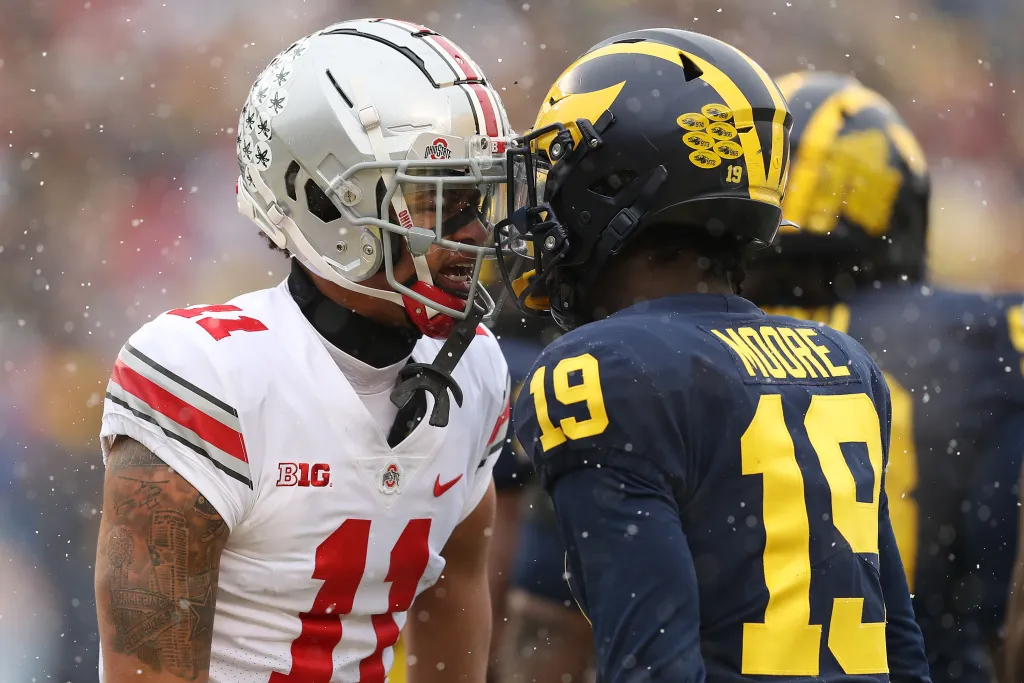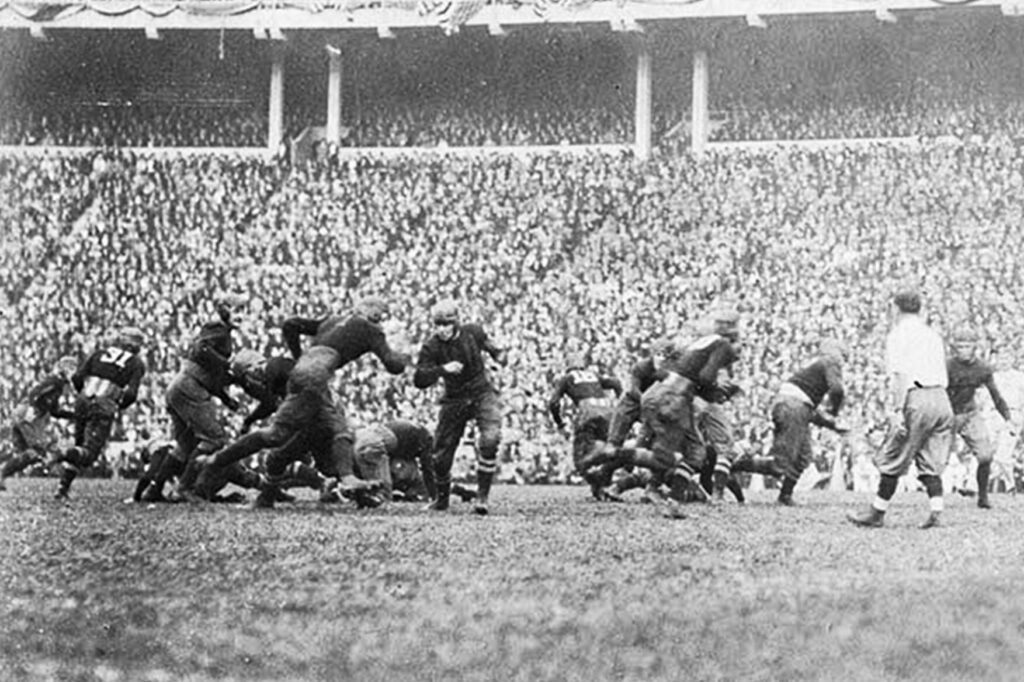
THE WAR
& THE RIVALRY

Ohio vs. Michigan: The War and The Rivalry
In the heartland of America, no rivalry stands as iconic as that between Ohio State and Michigan. To the uninitiated, it might seem like just another football feud, a product of athletic prowess and college chants. But a deep dive into our local history will unearth more…


A conflict not born on the gridiron but on disputed land, not over yard lines but borders. Before there were touchdowns, there was the Toledo War—a skirmish, brief yet fiery, that laid the foundations for an epic sporting rivalry that continues to capture the imagination of millions.
And so, as Toledo prepares to celebrate this great game with a Rally of the Rivals, we explore a story of competition and territorial pride; we journey back to a time when stakes were land and sovereignty, giving us a richer understanding of the border battle between scarlet and gray, maize and blue.
In the early 19th century, as the United States expanded westward, the boundaries of its territories and states were not always distinctly marked or agreed upon. Such was the case with the strip of land that came to be known as the Toledo Strip, a bone of contention between the then Territory of Michigan and the State of Ohio. The dispute over this sliver of land culminated in the Toledo War, a series of confrontations that fortunately saw more bluster than bloodshed.
Admittedly, Ohio’s northern border was controversial from its beginning. As part of the Northwest Ordinance of 1787, it was drawn starting from the southern point of Lake Michigan, proceeding directly to the east, terminating in Lake Erie at the Pennsylvania line. The problem was the border was drawn using outdated maps that showed the southern point of Lake Michigan farther north than it is. Because of this flaw, the surveyor’s line was skewed to the north, providing Ohio with valuable Lake Erie frontage. In 1802, Ohio’s founders realized the flaw while preparing for statehood and shrewdly adjusted the state constitution to guarantee Lake Erie access. The creators of the Ohio state constitution recorded, “The east line from the south bend of Lake Michigan would pass south of Lake Erie, then the boundary should angle north to the extremity of the Maumee Bay.”
Congress received Ohio into the Union without significant objections to this clever boundary proviso. However, a considerable controversy grew a few years later, in 1805, when the Territory of Michigan was established. Congress ignored the boundary stipulation in the Ohio constitution and ruled the terms of the Northwest Ordinance would establish Michigan’s southern border. As a result, an overlapping area called the Toledo Strip was created in which Ohio and Michigan Territory shared legal jurisdiction—both were prepared to go to war to defend their ground.
Most wars leave human casualties and property damage—the Toledo War was an exception.
No one died, and there was very little damage.
The physical war began in the spring of 1835 when an Ohio survey team, re-marking the 1817 William Harris survey, entered the disputed territory called the Toledo Strip on the late afternoon of Saturday, April 25, to run a line to Phillips Corner, fourteen miles south of Adrian, Michigan. A Michigan sheriff’s posse of 30 men surprised the smaller group of Ohio surveyors the following morning. The Ohio group ran for some nearby woods as the Michigan posse fired shots over their heads. Nine survey team members were captured and taken to Tecumseh, Michigan, to post bail. They were all charged with violating Michigan’s Pains and Penalties Act, a law passed in February 1835 by the Territorial Government of Michigan that said any Ohioans found in the area between Michigan and Ohio could be charged and punished without a trial.
Tension grew by midsummer. On July 15, 1835, Monroe County Deputy Sheriff Joseph Wood arrived at a Toledo tavern with a posse to arrest an Ohioan who had violated the Pains and Penalties Act. The Ohioan, a young man named Two Stickney—the son of Benjamin Stickney, one of Toledo’s founding fathers and possibly one of the biggest instigators of the Toledo War—resisted arrest, and a brawl broke out. Two Stickney stabbed Wood with a penknife during the ensuing fracas. The deputy fully recovered. However, Wood will always be known as the only injured soldier of the Toledo War.
The Toledo War was ultimately settled on December 14, 1836. Michigan reluctantly accepted a Congressional compromise that saw it abandon its claims for the Toledo Strip in exchange for admittance to the Union as the 26th state and the western three-quarters of the Upper Peninsula.
While the Toledo War was settled in 1836, it is easy for us to forget what was at stake today. If Ohio had lost, Toledo would be part of Michigan. But there is more to this story. If Ohio had failed, the University of Michigan would have been built in modern-day Toledo.

Although founded in Detroit in 1817, early University of Michigan representatives chose nearly 900 acres in downtown Toledo for a potential new campus. However, the proposed relocation was delayed until Michigan and Ohio resolved their border dispute. After Michigan lost the Toledo War, the University sold its land in Toledo to William Oliver, a founder of Port Lawrence and the namesake of Toledo’s Oliver House Hotel. The deed was transferred on May 5, 1837, in a sketchy deal that was eventually contested in the U.S. Supreme Court.
Later that same year, the newly founded state of Michigan passed an act providing for the organization of the University of Michigan in Ann Arbor. Just imagine the consequences if Ohio had lost the Toledo War: the border battle between the Ohio State Buckeyes and the University of Michigan Wolverines would be played in Toledo every other year. Instead of Fifth Third Field, Toledo’s Warehouse District would be home to “The Big House.” Count your blessings, Ann Arbor.
Undoubtedly, the echoes of this forgotten war reverberate in today’s Ohio State-Michigan football battles. Although separated by nearly two centuries, the same enthusiasm, passion, and desire to stake a claim still rages on the field as it did on the contested borders of yesteryear. The football rivalry may lack the militias and muskets of the Toledo War, but it shares the same heartbeat—a relentless drive to come out on top, to prove one’s worth, and to etch one’s name in the annals of history.


